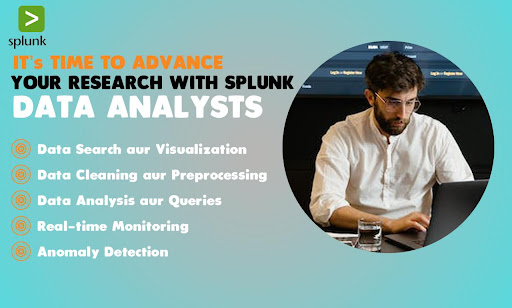Introduction
In today’s data-rich world, businesses rely heavily on data to make informed decisions, gain a competitive edge, and optimize their operations. Data Analysts play a crucial role in this process, transforming raw data into actionable insights that drive organizational success. However, the journey to data-driven insights is a complex one. It involves a structured research approach encompassing various steps, methodologies, and challenges. In this article, we will explore how Data Analysts research different projects, from defining research objectives to ensuring the accuracy and reliability of their findings. We will also examine the role of data visualization, data storytelling, and the impact of Splunk in enhancing its research capabilities in 2023.
Key Steps in Conducting Research as a Data Analyst
The research process as a Data Analyst typically follows a systematic approach. It starts with understanding the project requirements, gathering relevant information, and defining clear research objectives. Data Analysts then proceed to data collection, cleaning, analysis, and interpretation of the results. Finally, they present their findings meaningfully and actionable to stakeholders.
Defining Research Objectives for Different Projects
Before diving into the research process, Data Analysts must establish clear and specific research objectives. These objectives align with the organization’s goals and determine the scope and direction of the research. Defining research objectives helps focus efforts on extracting relevant insights and helps avoid getting lost in vast datasets.
Accessing Data Sources and Databases for Research
Data Analysts can access various data sources and databases depending on the project’s requirements. They may work with structured data in relational databases, unstructured data from APIs or web scraping, or big data from distributed systems. Choosing suitable data sources is crucial to obtain meaningful insights.
Collecting and Cleaning Data for Quality Assurance
Data quality is paramount in the research process. Data Analysts collect data from different sources and apply data-cleaning techniques to remove inconsistencies, errors, and missing values. It ensures that the data is accurate and reliable for analysis.
Statistical Methods and Tools for Data Analysis
Data Analysts leverage various statistical methods and tools to analyze data effectively. From descriptive statistics to inferential techniques, they draw meaningful conclusions and make data-driven decisions. Popular tools like Python, R, and SQL are crucial in data analysis.
Identifying Patterns and Trends in the Data
During the research process, Data Analysts seek patterns, trends, and correlations in the data. These insights help identify opportunities, understand customer behavior, and optimize operations. Advanced analytics techniques, including machine learning, are used to uncover hidden insights.
Splunk’s Impact on Data Analysis in 2023
Splunk, a leading data analytics platform, continues revolutionizing how Data Analysts conduct research. Its real-time data analysis capabilities, visualization features, and scalability make it an invaluable tool for handling complex datasets. As organizations embrace data-driven decision-making, Splunk’s role in enhancing research capabilities is bound to grow in 2023.
Common Challenges Faced by Data Analysts and Overcoming Them
Data Analysts encounter challenges during the research process, including data quality issues, data integration complexities, and extracting actionable insights from massive datasets. They overcome these challenges through data validation techniques, data transformation methods, and iterative analysis.
Utilizing Data Visualization Techniques for Effective Presentation
Data visualization is a powerful way to communicate research findings. Data Analysts use visualization techniques such as charts, graphs, and interactive dashboards to present complex data clearly and concisely, making it easier for stakeholders to grasp the insights.
The Role of Data Storytelling in the Research Approach
Data storytelling is a skill that Data Analysts utilize to make their insights more compelling and memorable. By weaving data-driven narratives, they create a context for decision-making, making it easier for stakeholders to understand the implications of the research findings.
Ensuring Accuracy and Reliability of Research Results
Data Analysts employ rigorous validation methods to ensure the accuracy and reliability of their research results. They perform sensitivity analysis, hypothesis testing, and cross-validation to validate the findings and verify the statistical significance of their conclusions.
Conclusion
The journey of a Data Analyst from raw data to data-driven insights is a complex and dynamic process. With a systematic approach, access to diverse data sources, and a wide array of statistical tools, Data Analysts transform data into actionable insights that drive decision-making. As the demand for data-driven strategies continues to rise, the role of Splunk in enhancing research capabilities becomes increasingly vital. Overcoming challenges, utilizing data visualization techniques, and employing data storytelling are key skills that enable Data Analysts to communicate their findings to stakeholders effectively. Ultimately, their dedication to ensuring accuracy and reliability ensures that organizations make informed decisions and stay ahead in today’s data-centric world.










